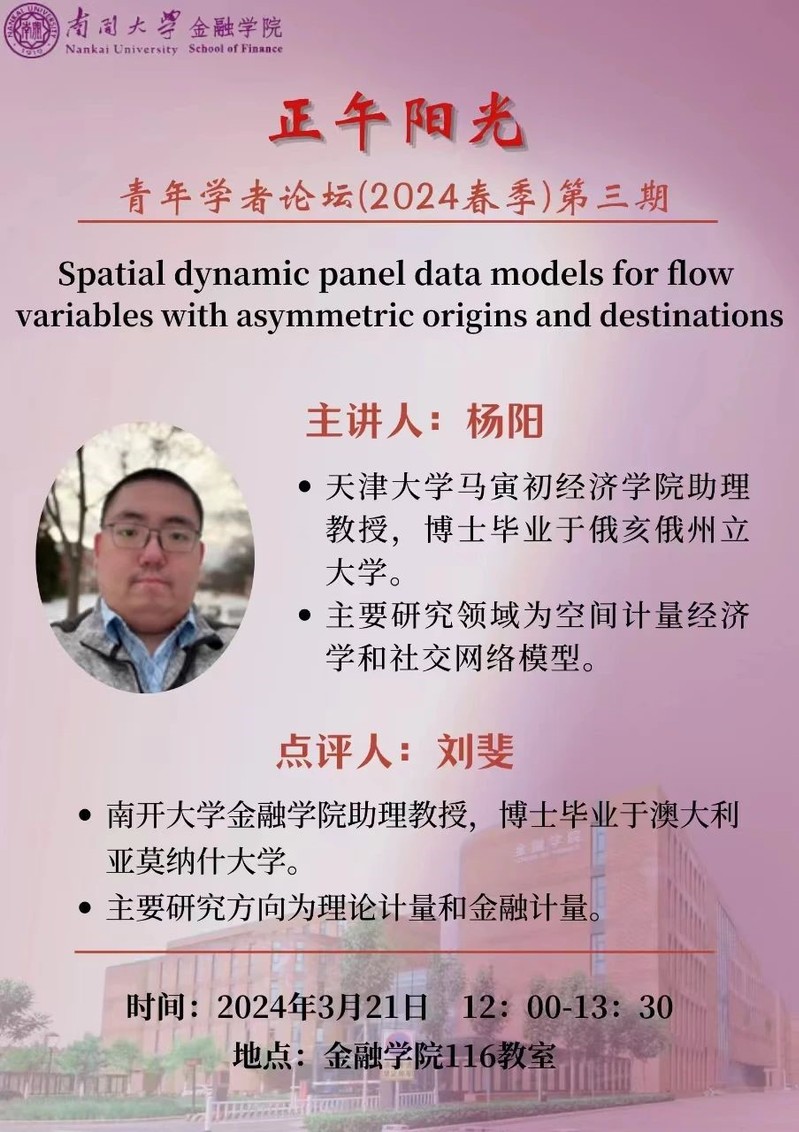Advance Notice: the Third Session of Noon Sunshine-Young Scholars Seminar (the Spring in 2024)
“Noon Sunshine-Young Scholars Seminar” is a regular academic exchange platform held by School of Finance. It aims to offer valuable occasions of communications among scholars in our college, between teachers and students, the domestic and the oversea. In this semester, we keep our original intention, set off for a new voyage. We will devote ourselves to fostering the academic atmosphere in the college, and promoting the academic level for both teachers and students.
The third session of “Noon Sunshine-Young Scholars Seminar” for the Spring Semester in 2024 is arranged as follows:
Lecture topic:Spatial dynamic panel data models for flow variables with asymmetric origins and destinations
Keynote Speaker: Yang Yang
Commentator: Liu Fei
Date:Thursday, March 21st, 2024
Time:12:00-13:00
Lecture Venue:Room 116, School of Finance
Abstract
This paper introduces a higher-order spatial dynamic panel data (SDPD) model for a directed origin-destination (OD) flow outcome variable with the quasi-maximum likelihood (QML) estimation method. The model can capture both the intra-temporal and inter-temporal spatial interactions among the origins, among the destinations, and from neighbors to the origins to neighbors of the destination. We extend the traditional symmetric bilateral design from traditional gravity models by allowing for an asymmetric origins and destinations structure to accommodate broader empirical needs in the studies of unilateral flows, effects of flows from one selected direction, and/or the effects of net flows, etc. Variant specifications of the fixed effects have been set forth to account for the three-dimensional nature and the unobserved heterogeneity of a flow variable in the panel data setting. A direct approach for directly estimating the fixed effects and a data transformation approach to remove the time-variant effects have been proposed. We establish the consistency and asymptotic distribution as well as the analytic bias correction procedure for the QML estimators. We then perform Monte Carlo experiments to investigate their finite sample performance. Moreover, by applying our model to study U.S. State-to-State migration flows from 1991 to 2019, we detect three channels of contemporaneous interactions, three channels of diffusion effects, and a moderate persistence in this type of OD flows.









